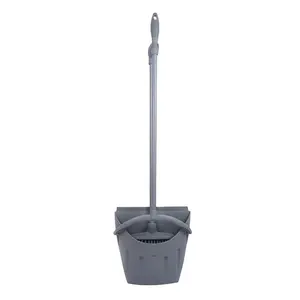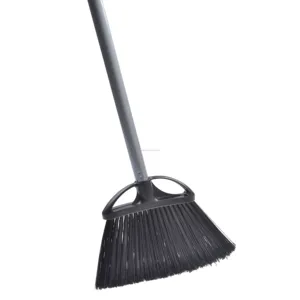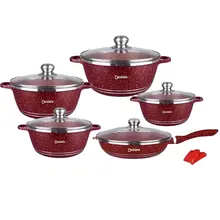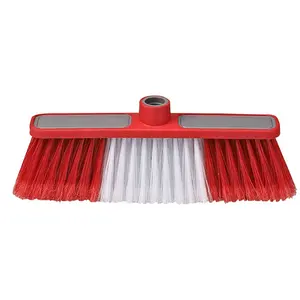A sweeper broom is an essential tool designed for cleaning various surfaces, ranging from household floors to larger outdoor areas. This versatile cleaning apparatus can come in many forms, including manual push sweepers, electric brooms, and power sweepers, each tailored to specific cleaning needs. The sweeper broom is not just a simple cleaning implement; it is a result of thoughtful engineering and design, aimed at providing efficient, thorough, and user-friendly cleaning solutions for both indoor and outdoor environments.
Types of Sweeper Brooms
The types of sweeper brooms available are diverse, each serving a specific purpose. Manual sweepers, such as the lawn broom or carpet broom sweeper, are perfect for quick clean-ups and small areas. Electric brooms, like the electric broom or broom vacuum, offer convenience and efficiency for indoor use, with some models featuring a spray function for an even deeper clean. For larger or outdoor spaces, a power sweeper or stihl power sweeper provides the necessary robustness and power to tackle heavy debris and larger areas. Specialized types like the artificial turf sweeper or synthetic grass sweeper are designed to care for delicate surfaces without causing damage.
Structure of Sweeper Brooms
The structure of a sweeper broom is a key factor in its functionality. A typical power broom might include a durable handle, a motorized brush roll designed for effective debris collection, and a waste container. The handle is often ergonomically designed to reduce strain during use, while the brush roll is engineered to provide the right amount of agitation to lift dirt from surfaces without causing damage. The motor, crucial in an electric broom, is optimized to balance power and energy efficiency, providing strong suction and thorough cleaning capabilities.
Materials in Sweeper Brooms
The materials used in the construction of sweeper brooms are chosen for their durability, performance, and sometimes, their environmental impact. Handles made from aluminum or stainless steel offer a lightweight yet sturdy solution, while broom heads made from eco-friendly plastics or natural fibers cater to those seeking sustainable options. The bristles may be composed of materials like TPR, which is gentle on surfaces but effective in trapping dirt, or more rigid plastics for tougher cleaning tasks. These materials are selected not only for their functional properties but also for their longevity and ease of maintenance.
Business Usages and Applications
Sweeper brooms find their place in a multitude of business settings. In the agricultural sector, a lawn sweeper for artificial turf is crucial for maintaining the aesthetic and functional quality of sports fields. Construction sites benefit from the robust cleaning power of a power sweeper, which can handle everything from fine dust to larger rubble. In urban environments, municipal workers utilize heavy-duty sweepers for street cleaning, contributing to public health and safety. Each application not only demands a tool that can perform under specific conditions but also one that can contribute to the overall efficiency and cleanliness of the operation.
Functions of Sweeper Brooms
The functions of sweeper brooms are varied and cater to different cleaning needs. A power broom is designed to perform heavy-duty cleaning and can often be found in use on construction sites or for municipal street cleaning. An electric broom, on the other hand, is typically used for indoor cleaning, with functions that may include adjustable suction settings for different floor types and detachable hand units for spot cleaning. The manual sweeping brush remains a staple in many homes and businesses for its simplicity and reliability.
Features of Sweeper Brooms
The features of sweeper brooms that set them apart include their ergonomic design, which often involves adjustable handles to suit users of different heights, and their versatility, with some models offering interchangeable brush heads for various types of debris. Electric models may boast features such as cordless operation, rechargeable batteries, and even smart technology that allows them to be controlled via smartphone apps. These features not only enhance the user experience but also boost the efficiency and effectiveness of the cleaning process.
Benefits of Using Sweeper Brooms
The benefits of using sweeper brooms are extensive. They offer a practical and efficient way to maintain cleanliness, which is essential for both aesthetics and hygiene. For businesses, the use of a power sweeper can mean a more presentable commercial space, leading to a better customer experience and potentially increased revenue. For homeowners, an electric broom provides a quick and easy way to keep floors clean, contributing to a healthier living environment. The physical ease of use also reduces the strain on the user, making the task of cleaning less daunting and more manageable.
How to Use Sweeper Brooms
To use a sweeper broom effectively, one must understand the specific model's operation. For manual sweepers, a firm push is required to activate the brushes and collect debris. Electric and power models, such as the electric broom or power sweeper, typically start with a button or switch and may have different modes or settings to accommodate various types of flooring. Proper technique, such as overlapping strokes, ensures that no debris is missed and the area is thoroughly cleaned.
How to Choose the Right Sweeper Broom
Choosing the right sweeper broom involves considering the size of the area to be cleaned, the type of debris, and the user's physical capabilities. An electric broom might be ideal for someone looking for a lightweight, easy-to-maneuver option for indoor use, while a power sweeper would be better suited for larger, outdoor areas or commercial spaces. Features such as battery life, brush type, and waste capacity should also be taken into account to ensure the sweeper meets the specific needs of the user.
How to Clean and Maintain Sweeper Brooms
Maintaining a sweeper broom is crucial for its longevity and effectiveness. For manual sweepers, this might involve regularly cleaning the brushes and checking for any damage. For electric and power models, maintenance tasks include charging the battery, cleaning or replacing filters, and ensuring the motor is free from debris. Following the manufacturer's guidelines for care and storage will help keep the sweeper broom in good working order.
What are the cleaning capabilities of different sweeper brooms?
The cleaning capabilities of sweeper brooms vary depending on their design and power source. A power broom, for example, is capable of removing debris from outdoor surfaces such as artificial turf or synthetic grass with ease. On the other hand, an electric broom is more suited for indoor cleaning, efficiently picking up dust and dirt from carpets and hard floors. The choice of broom head material also plays a role in the cleaning effectiveness, with different materials suited to different types of debris and surfaces.
Are there eco-friendly options for sweeper brooms?
Yes, there are eco-friendly options available for those seeking sustainable cleaning tools. Many sweeper brooms are now designed with environmental considerations in mind, featuring recyclable materials and energy-efficient motors. When browsing on Alibaba.com, you can find a variety of eco-friendly sweeper brooms that offer effective cleaning solutions without compromising on environmental values.
How does the sweeper broom contribute to indoor air quality?
A sweeper broom contributes significantly to indoor air quality by effectively removing dust, allergens, and other particulates from the floor. Electric brooms often come with filters that trap fine particles, preventing them from being recirculated into the air. Regular sweeping with a well-maintained sweeper broom can thus help maintain a healthier indoor environment, which is especially important in spaces like homes, offices, and healthcare facilities.








































 浙公网安备 33010002000092号
浙公网安备 33010002000092号 浙B2-20120091-4
浙B2-20120091-4